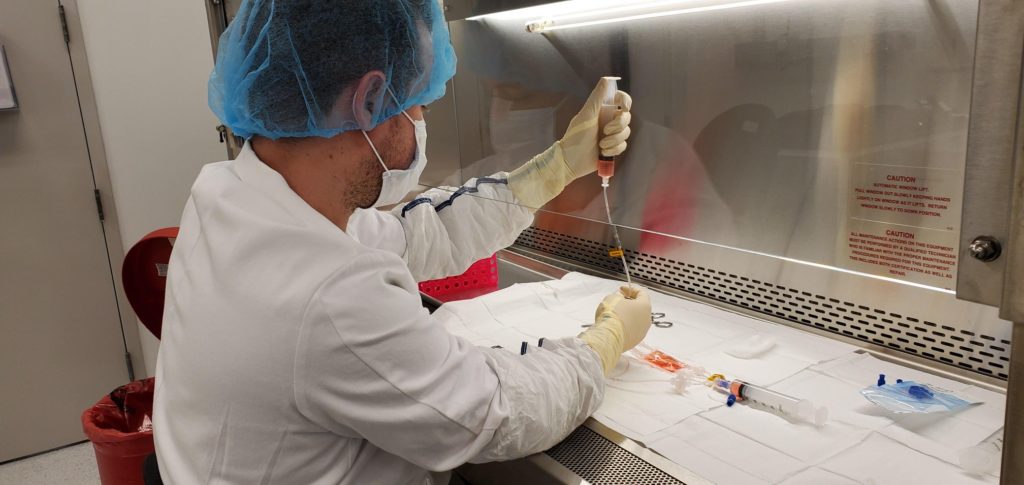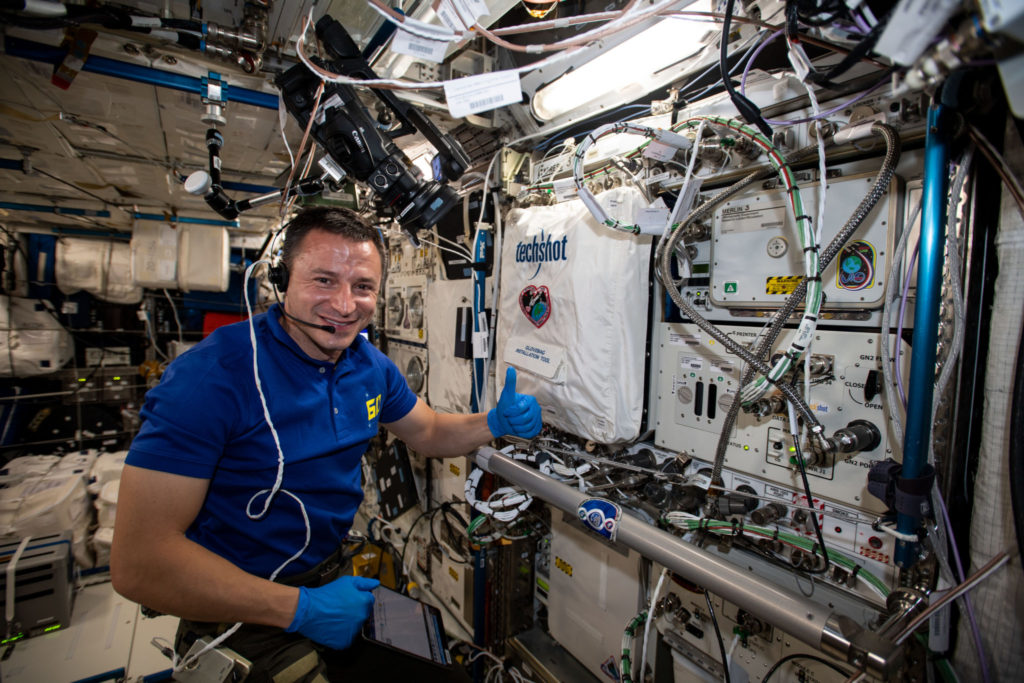 2020 is already promising to be a fantastic year for space exploration. The next generation of Artemis explorers can begin applying for the program that will be journeying to the Moon, Mars and beyond; the James Webb Space Telescope is ready to test key deployments made in space, and even the Orion spacecraft that will blast off to the Moon during Artemis missions has successfully passed its final tests. Furthermore, NASA and commercial space companies prepare for the colonization of orbit, rockets are taking payloads to the International Space Station (ISS) very often and 3D bioprinting is becoming an attractive and useful method to carry out experiments. The next one up is SpaceX mission CRS-20. Scheduled to launch at 11:50 PM Eastern Time (EST) on March 6 from Florida’s Cape Canaveral Air Force Station, the unpiloted cargo spacecraft is expected to arrive at the orbiting laboratory two days later with three Techshot-managed research campaigns.
2020 is already promising to be a fantastic year for space exploration. The next generation of Artemis explorers can begin applying for the program that will be journeying to the Moon, Mars and beyond; the James Webb Space Telescope is ready to test key deployments made in space, and even the Orion spacecraft that will blast off to the Moon during Artemis missions has successfully passed its final tests. Furthermore, NASA and commercial space companies prepare for the colonization of orbit, rockets are taking payloads to the International Space Station (ISS) very often and 3D bioprinting is becoming an attractive and useful method to carry out experiments. The next one up is SpaceX mission CRS-20. Scheduled to launch at 11:50 PM Eastern Time (EST) on March 6 from Florida’s Cape Canaveral Air Force Station, the unpiloted cargo spacecraft is expected to arrive at the orbiting laboratory two days later with three Techshot-managed research campaigns.
The Indiana-based commercial research company is sending equipment and samples supporting plant, heart and cartilage research for NASA, Emory University and the Uniformed Services University of the Health Sciences (USU) to the ISS. According to the company, astronauts onboard the station will use Techshot’s 3D BioFabrication Facility (BFF) – mounted inside the ISS U.S. National Laboratory (ISS National Lab) since last summer – to manufacture human knee menisci for the 4-Dimensional Bioprinting, Biofabrication, and Biomanufacturing, or 4D Bio3 program. Based at USU, 4D Bio3 is a collaboration between the USU and The Geneva Foundation, a non-profit organization that advances military medical research.
Funded by the U.S. Defense Health Program and managed by the Geneva Foundation, 4D Bio3 promotes the development and application of advanced bioprinting, biofabrication, and biomanufacturing technologies for research pursuant to U.S. Department of Defense priorities – and ultimately for translation to clinical medical defense care and training solutions.
“This is our most diverse manifest to date,” said Techshot President and CEO, John Vellinger. “Throughout March we’ll be conducting three major investigations in space for three customers using three very different Techshot-built research devices. It’s going to be a busy month, but we’re excited to see the results.”
Techshot owns BFF and the company built it at a cost of approximately seven million dollars. The starting point was an nScrypt printer, which now is highly modified by Techshot for use inside the ISS. In that relationship, Techshot handles all the space bioprinting, while nScrypt handles all the Earth-based bioprinting.
This first experiment for 4D Bio3 next month will be used as a test of the materials and the processes required to print a meniscus in space. Techshot engineers will upload a design file to BFF from the company’s Payload Operations Control Center in Greenville, Indiana, and evaluate its success via real-time video from inside the unit. A second meniscus print will take place in BFF early next year and the item will then be returned to Earth for extensive testing and comparison to the nScrypt Earth-printed items. Last year nScrypt printed the same thing at a U.S. military base in Africa with their own printer.
Vincent B.Ho, Director of 4D Bio3 and professor and chair of radiology at USU said that “meniscal injuries are one of the most commonly treated orthopedic injuries, and have a much higher incidence in military service members—reported to be almost 10 times that of the civilian population. We successfully biofabricated 3D human medial and lateral menisci in a pilot study performed in Africa last summer and anticipate learning valuable lessons on the challenges and benefits of biofabrication in microgravity by performing a similar experiment on the space station.”
Besides BFF, there are four other Techshot owned and operated research machines inside the ISS today. Only the BFF is a bioprinter. The others are an X-ray machine for mice, two identical units called the Techshot Multi-use Variable-gravity Platform (MVP), and one called the ADvanced Space Experiment Processor (ADSEP), which is where cells printed in the BFF go to become conditioned and cultured into the tissue. The company has agreements with NASA and the ISS National Lab that permit Techshot to operate a commercial business in space. This is part of NASA’s objective to make orbit more commercial, providing access to space for nearly anyone.
Another complex Techshot-managed experiment launching onboard SpaceX CRS-20 will test whether a heart-specific stem cell, called a cardiac progenitor, multiplies better in space and if more of them become heart muscle cells known as cardiomyocytes. This is part of Chunhui Xu, an associate professor in the department of pediatrics at the Emory University School of Medicine who studies heart cells, research that aims to improve treatments for congenital heart disorders and better the heart’s ability to regenerate after injuries.

Preparing the experiments: under the vent hood, Biomedical Engineer Jordan Fite adds media to bags and fluid loops that will be used in the experiment in space (Image: Techshot)
Techshot explained that human cardiac tissues can’t repair themselves once damaged from disease, due to this, repairing a failing heart by cell therapy requires a large number of cardiomyocytes, which can be converted from stem cells cultured in two dimensions in Earth-based laboratories. Without the pull of gravity, it is expected that culturing in three dimensions in space, inside specialized Techshot cell culture experiment modules, will increase the yield of high-quality heart muscle cells. The company expects that learning more about why this happens could lead to new strategies for reproducing the same results on a much larger scale on Earth, lowering costs and enabling more patients to receive needed cardiac cell therapies.
It is expected that once the cargo spacecraft reaches the station, the 12 Techshot experiment modules will be removed from the spacecraft and inserted by the crew into the company’s Multi-use Variable-gravity Platform (MVP) unit number two mounted in the Japanese space laboratory known as Kibo.
“We are thankful for Techshot’s engineers who designed the Multi-use Variable-gravity Platform hardware and will help us maintain constant communication with the astronauts during the flight operation. Their professionalism and collaboration with our team have contributed tremendously toward our overall research efforts,” said Ho.
Besides the materials for the BFF meniscus print, SpaceX CRS-20 will also carry 12 Passive Orbital Nutrient Delivery System, or PONDS, plant growth devices that Techshot co-developed with Tupperware Brands, and that was first prototyped by NASA Kennedy Space Center. According to company officials, they will be growing red romaine lettuce in the devices, installed inside two of the space station’s identical plant growth chambers – each called Veggie. The PONDS units are being tested in two different configurations, each representing approaches refined from two previous flight tests. For this demonstration, lettuce is expected to grow in space for 21 days. Besides the hardware built and own, Techshot also manages the space station’s most complex greenhouse, called the Advanced Plant Habitat, and it manages two on-orbit research furnaces called PFMI and SUBSA.
Techshot has been working hard to get samples ready in a lab at the Space Station Processing Facility at NASA’s Kennedy Space Center.

Product assurance associate Keri Roeder, program manager Nathan Thomas and mechanical engineer Grant Vellinger prepared samples for Techshot customer Emory University (Image: Techshot)
Founded more than 30 years ago, Techshot operates its own commercial research equipment in space and serves as the manager of three NASA-owned ISS payloads. The company is also working on other space 3D printing technologies. Last fall they tested a laser-based 3D metal printer in zero gravity inside an aircraft performing parabolic arcs over the Gulf of Mexico (sometimes unofficially nicknamed “the vomit comet”). However, officials suggest that this technology is still at least a couple of years from Techshot launching it to the space station.
NASA and dozens of companies continue to work together to develop the means for astronauts and space explorers to endure life in orbit, the Moon and other planets. This vision is enthralling for anyone who ever dreamed of going to space, even hopeful of the next generations that will be able to experience space travel and conduct research work in microgravity. Perhaps we are too hopeful of the future, but with so much going on, it’s difficult not to be.
The launch on Friday will be the last SpaceX launch under the current NASA CRS-1 contract, yet SpaceX will continue performing resupply missions under a new CRS-2 contract beginning with the next scheduled resupply mission in August this year. To watch the launch, which is scheduled to take place at 11:50 p.m. EST on Friday, March 6, and capture of the spacecraft’s arrival at the ISS, you can tune into NASA TV using the video below:
Subscribe to Our Email Newsletter
Stay up-to-date on all the latest news from the 3D printing industry and receive information and offers from third party vendors.
You May Also Like
Gorilla Sports GE’s First 3D Printed Titanium Cast
How do you help a gorilla with a broken arm? Sounds like the start of a bad joke a zookeeper might tell, but it’s an actual dilemma recently faced by...
Nylon 3D Printed Parts Made More Functional with Coatings & Colors
Parts 3D printed from polyamide (PA, Nylon) 12 using powder bed fusion (PBF) are a mainstay in the additive manufacturing (AM) industry. While post-finishing processes have improved the porosity of...
$25M to Back Sintavia’s Largest Expansion of Metal 3D Printing Capacity Since 2019
Sintavia, the digital manufacturing company specializing in mission-critical parts for strategic sectors, announced a $25 million investment to increase its production capacity, the largest expansion to its operations since 2019....
Velo3D Initiates Public Offering in a Bid to Strengthen Financial Foundations and Drive Future Growth
Velo3D (NYSE: VLD) has been among a number of publicly traded 3D printing firms that have attempted to weather the current macroeconomic climate. After posting a challenging financial report for 2023,...
































